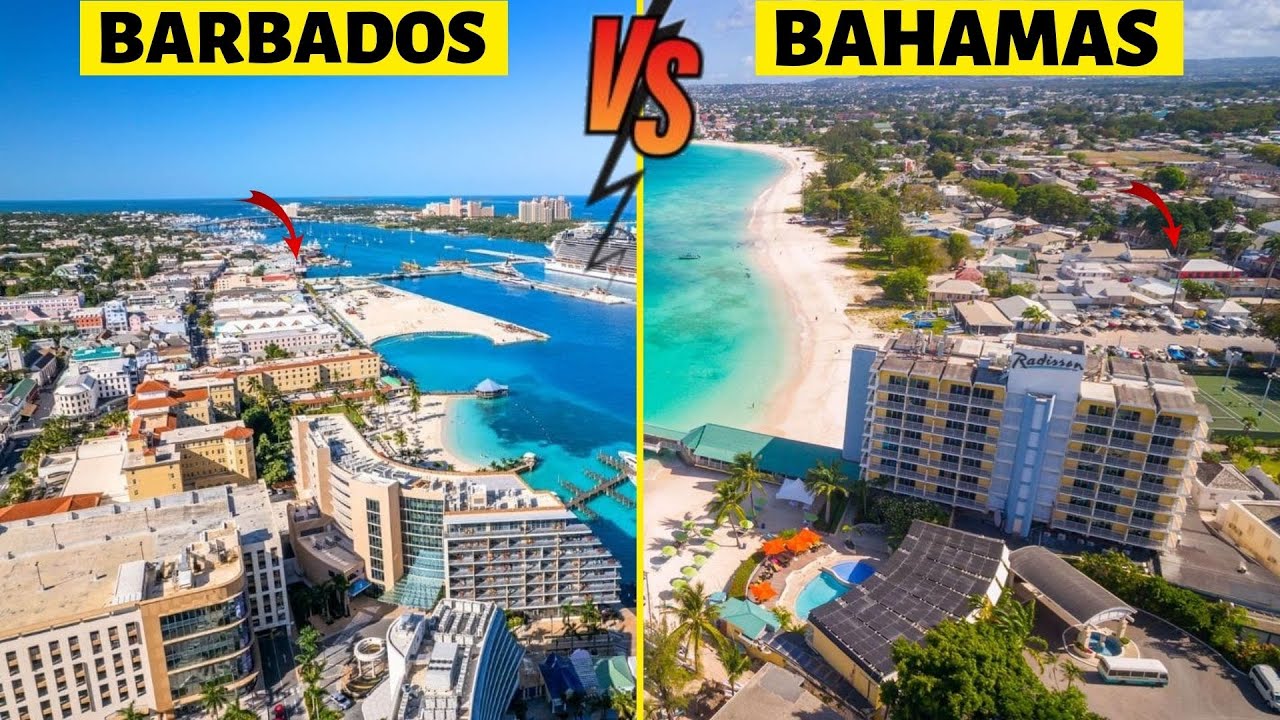Introduction: Barbados vs. Rhode Island Size Comparison
When it comes to comparing the sizes of different regions, it is essential to consider various factors such as land area, coastline, population density, and urban-rural distribution. In this article, we will delve into a detailed analysis of the size comparison between Barbados and Rhode Island. Both Barbados and Rhode Island are small regions, but each possesses unique geographic features and characteristics that set them apart. By examining their respective land areas, coastlines, population densities, and urban-rural distribution, we can gain a comprehensive understanding of how these two regions compare in terms of size.
Understanding the Geographic Dimensions of Barbados
Barbados, a small Caribbean island country, encompasses a land area of approximately 430 square kilometers (166 square miles). Located in the western part of the North Atlantic Ocean, Barbados is known for its breathtaking beaches, vibrant coral reefs, and tropical climate. Despite its small size, Barbados boasts a diverse geography, including rolling hills, limestone formations, and a central highland region.
Delving into the Geographical Extent of Rhode Island
Rhode Island, the smallest state in the United States, covers an area of about 3,140 square kilometers (1,214 square miles). Situated in the New England region, Rhode Island is characterized by a mixture of coastal lowlands, hilly terrain, and densely populated urban areas. Despite its limited land area, Rhode Island is known for its rich history, charming coastal towns, and picturesque landscapes.
Analyzing Barbados’ Land Area and Its Implications
With its land area of 430 square kilometers, Barbados is significantly smaller than Rhode Island. This limited space presents both challenges and opportunities for the island nation. On one hand, the small land area limits Barbados’ capacity for extensive agricultural production and natural resource availability. On the other hand, the compact size allows for efficient transportation and communication networks, facilitating economic development and tourism.
Exploring Rhode Island’s Land Area: Key Facts and Figures
Rhode Island’s land area of 3,140 square kilometers provides more room for diverse economic activities and infrastructure development compared to Barbados. The state’s relatively larger size allows for a more extensive range of industries, including manufacturing, healthcare, and education. Additionally, the larger land area permits the presence of multiple urban centers, contributing to the state’s economic growth and cultural vibrancy.
Barbados’ Coastal Line: A Close Examination
Barbados boasts a stunning coastline that stretches for approximately 97 kilometers (60 miles). The island’s coastline is renowned for its pristine white sandy beaches, crystal-clear turquoise waters, and natural coral reefs. This picturesque coastal landscape has made Barbados a popular tourist destination, attracting visitors from around the world who seek sun, sea, and relaxation.
Rhode Island’s Coastline: Length and Significance
Rhode Island’s coastline measures around 643 kilometers (400 miles), making it one of the states with the longest coastlines in the United States. The state’s coastal region plays a significant role in its economy, with activities such as fishing, shipping, and tourism thriving along the shoreline. The coastal areas are also home to numerous historic sites, recreational facilities, and scenic landscapes that draw both residents and tourists alike.
Population Density: Barbados vs. Rhode Island
As a small island nation, Barbados has a relatively high population density. With an estimated population of over 287,000 residents, the island’s population density stands at around 670 people per square kilometer (1,735 people per square mile). This high population density is due to the limited land area and the concentration of economic activities and infrastructure in urban areas.
Demographic Analysis: Barbados’ Population Distribution
Barbados’ population distribution is mainly concentrated along the coastal regions, particularly in the capital city of Bridgetown and other urban centers. The coastal areas offer better employment opportunities, access to services, and a higher quality of life, attracting the majority of the population. In contrast, the inland areas with more rugged terrains tend to have sparser populations and are primarily utilized for agriculture.
Rhode Island’s Population Density: An In-depth Review
Rhode Island, with a population of approximately 1.1 million residents, has a lower population density compared to Barbados. The state’s population density stands at around 350 people per square kilometer (904 people per square mile). The higher land area of Rhode Island allows for a more dispersed population distribution, with urban areas concentrated around cities such as Providence, Warwick, and Cranston.
Urban vs. Rural: Barbados and Rhode Island Comparison
Both Barbados and Rhode Island have a significant urban population, contributing to their economic growth and cultural diversity. In Barbados, urban areas are more concentrated due to the limited land area, with around 31% of the population residing in urban centers. In Rhode Island, approximately 90% of the population lives in urban areas, reflecting the state’s larger land area and the presence of multiple cities.
Conclusion: A Comparative Analysis of Barbados and Rhode Island
In conclusion, while both Barbados and Rhode Island are relatively small regions, they exhibit distinctive characteristics in terms of size and geographic dimensions. Barbados, with its small land area and picturesque coastal line, offers a unique tropical environment. Rhode Island, on the other hand, embraces a larger land area, a longer coastline, and a more dispersed population. Understanding these differences allows us to appreciate the diverse opportunities and challenges presented by these two regions and enhances our knowledge of their respective sizes.




